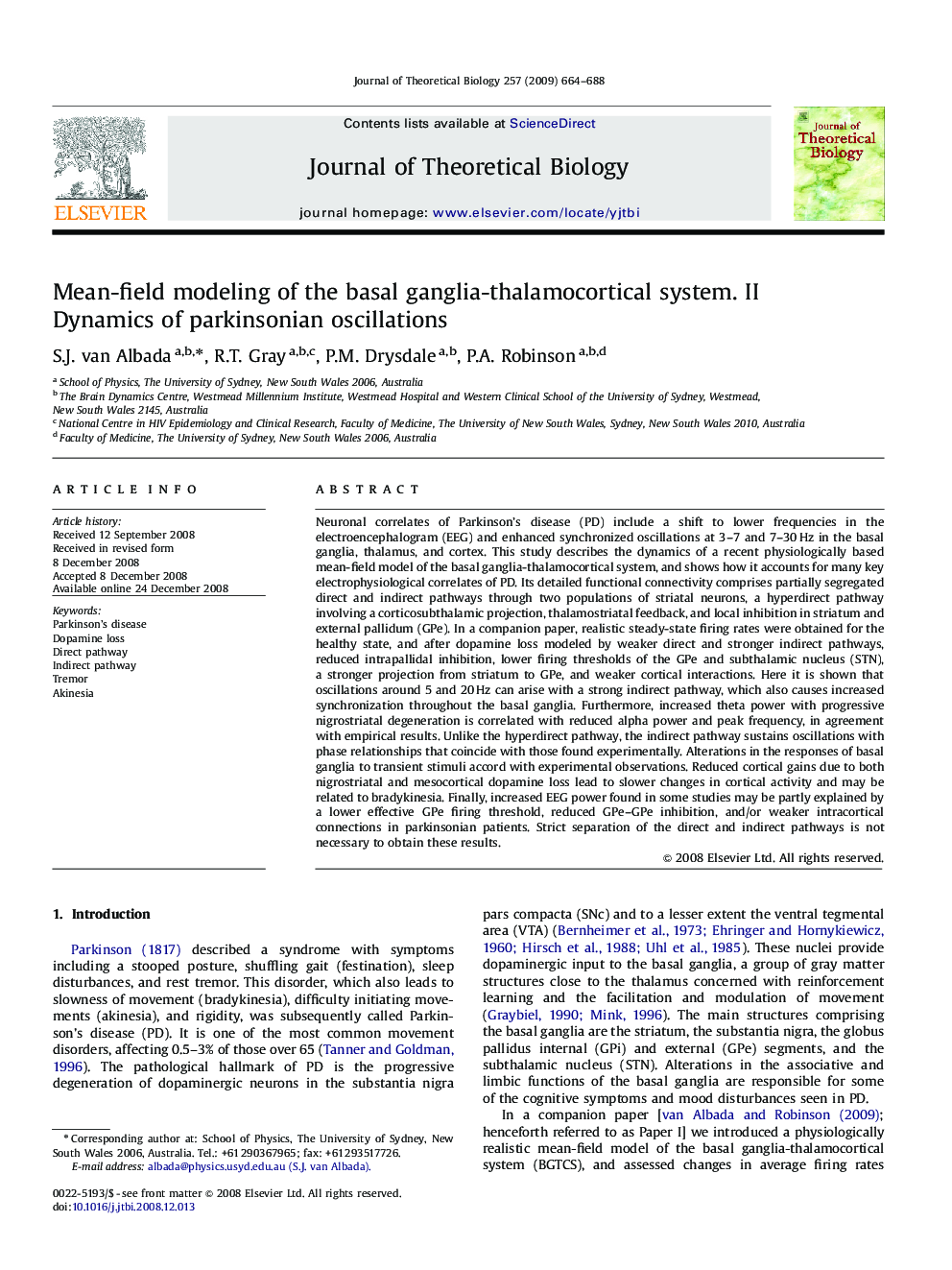| Article ID | Journal | Published Year | Pages | File Type |
|---|---|---|---|---|
| 4498043 | Journal of Theoretical Biology | 2009 | 25 Pages |
Neuronal correlates of Parkinson's disease (PD) include a shift to lower frequencies in the electroencephalogram (EEG) and enhanced synchronized oscillations at 3–7 and 7–30 Hz in the basal ganglia, thalamus, and cortex. This study describes the dynamics of a recent physiologically based mean-field model of the basal ganglia-thalamocortical system, and shows how it accounts for many key electrophysiological correlates of PD. Its detailed functional connectivity comprises partially segregated direct and indirect pathways through two populations of striatal neurons, a hyperdirect pathway involving a corticosubthalamic projection, thalamostriatal feedback, and local inhibition in striatum and external pallidum (GPe). In a companion paper, realistic steady-state firing rates were obtained for the healthy state, and after dopamine loss modeled by weaker direct and stronger indirect pathways, reduced intrapallidal inhibition, lower firing thresholds of the GPe and subthalamic nucleus (STN), a stronger projection from striatum to GPe, and weaker cortical interactions. Here it is shown that oscillations around 5 and 20 Hz can arise with a strong indirect pathway, which also causes increased synchronization throughout the basal ganglia. Furthermore, increased theta power with progressive nigrostriatal degeneration is correlated with reduced alpha power and peak frequency, in agreement with empirical results. Unlike the hyperdirect pathway, the indirect pathway sustains oscillations with phase relationships that coincide with those found experimentally. Alterations in the responses of basal ganglia to transient stimuli accord with experimental observations. Reduced cortical gains due to both nigrostriatal and mesocortical dopamine loss lead to slower changes in cortical activity and may be related to bradykinesia. Finally, increased EEG power found in some studies may be partly explained by a lower effective GPe firing threshold, reduced GPe–GPe inhibition, and/or weaker intracortical connections in parkinsonian patients. Strict separation of the direct and indirect pathways is not necessary to obtain these results.
